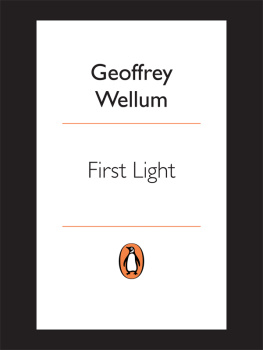First published 2002 by Ashgate Publishing
Published 2017 by Routledge
2 Park Square, Milton Park, Abingdon, Oxon 0X14 4RN
711 Third Avenue, New York, NY 10017, USA
Routledge is an imprint of the Taylor & Francis Group, an informa business
Copyright Frank A.J.L. James 2002
Frank A. J.L. James and the contributors have asserted their moral right to be identified as the authors of this work in accordance with the Copyright, Designs and Patents Act, 1988.
All rights reserved. No part of this book may be reprinted or reproduced or utilised in any form or by any electronic, mechanical, or other means, now known or hereafter invented, including photocopying and recording, or in any information storage or retrieval system, without permission in writing from the publishers.
Notice:
Product or corporate names may be trademarks or registered trademarks, and are used only for identification and explanation without intent to infringe.
British Library Cataloguing in Publication Data
The common purposes of life: science and society at the
Royal Institution of Great Britain
1.Royal Institution of Great Britain
I.James, Frank A. J. L., 1955-
506.041
Library of Congress Cataloging-in-Publication Data
The common purposes of life : science and society at the Royal Institution of Great
Britain / edited by Frank A.J.L. James,
p. cm.
Includes bibliographical references and index.
ISBN 0-7546-0960-X(alk paper)
1. Royal Institution of Great Britain-History. L James, Frank A. J. L, 1955- II. Royal
Institution of Great Britain.
Q41.C66 2002
506.041--dc21
2002026184
ISBN 13: 978-0-7546-0960-5 (hbk)
GREENFIELD SUSAN
The Royal Institution was founded in 1799 to diffuse ... science to the common purposes of life, hence the title of this book. Since that time the Royal Institution has more than amply lived up to its mission. Indeed Albemarle Street has the dubious claim to fame of being the first one-way street in London due to the congestion of the carriages caused by the popularity of the events held here at number 21. Now, at last, here is a book that charts the two centuries in which science has impacted increasingly on peoples lives. Although we are ever more familiar with the notion of the public understating of science, nowadays few realise that the Royal Institution, since its inception, has been pioneering the introduction of science to a wider and more general audience. In this regard the Royal Institution is a unique institution. Not only does ground breaking science research still continue in its Mayfair laboratories (indeed the first custom made laboratories were here in Albemarle Street) but in addition, all the Directors of the Royal Institution, of which I stand humbly as the most recent in the line, have dedicated themselves to sharing the excitement of their science with everyone. The dmocratisation of science has been part of the lifeblood of the Royal Institution for 200 years. But not only is it a home for research and a venue for public events, but it also boasts a thriving History of Science and Heritage Department. That is why Dr Frank James, who heads this sector, is uniquely placed to edit a book that really does span all the different activities of the Royal Institution over its exciting and turbulent history. I hope that as you the reader travel through the chapters you will gain a sense of the diversity of the activities and the uniqueness of the Royal Institution. We are free of any private or public sector agenda, receive no money from government. The Royal Institution is uniquely placed to continue to disseminate science to the widest audience possible, at a time when it is increasingly encroaching in all the things we hold dear: nutrition, communication, reproduction, the climate, finance and education are all increasingly being touched by science, and the need to be scientifically literate has never been quite so acute. The sub-title of this book, Science and Society, could therefore not be more appropriate. I feel that this book reflects, in all its diversity spanning as it does such a formative time period, the mission of the Royal Institution to diffuse science in the future as in the past, for the common purposes of life.
It is always a great pleasure to thank those who have contributed all their efforts into producing a collaborative work such as this. Most, but not all, of the essays published here were originally presented in a series of seminars held during 1999 to mark the bicentenary of the founding of the Royal Institution. Other essays, such as those by Prescott and by James and Quirke, were presented at seminars in 2000 and 2001 respectively. I am grateful to all the authors for taking account of the discussions at their own seminar as well as others in the series, then for reworking their presentations into written form and for patiently answering my queries during the editorial process. I am very grateful to Dr G.M. Prescott for writing the captions to the whole page illustrations and to Mrs Raj Ajodah who located much of the material used in preparing the biographical register. I also wish to thank my editor at Ashgate, Dr John Smedley, for all his help and advice and for exercising patience as the book developed.
Like the institution described here, this book is produced in a specific historical context which allowed it to take the form that it has. I am grateful to the Wellcome Trust for the award of the grant which enabled Dr Viviane Quirke to work on the Bragg papers during 20002001, but for which it would not have been possible for chapters 11 and 12 to have been written. And I am grateful to the Institution of Electrical Engineers for their continuing support of the project to edit Faradays correspondence without which our understanding of the Royal Institution from the 1810s to the 1860s would be much impoverished.
Furthermore, it gives me great pleasure to thank many people who are associated with the Royal Institution for all their help and interest. Thanks must go especially to the Director of the Royal Institution, Professor Baroness Greenfield, for all her support. I must also thank all those current and former Officers and members of staff for their recollections, which so inform those chapters dealing with more recent events. In this context members of the Bragg family, especially Lady Heath, Patience Thomson and Stephen Bragg have been unstinting in providing recollections of crucial events which were documented elliptically if at all. It was also a great pleasure to interview Kenneth Bridger about his time at the Royal Institution in the 1930s and late 1940s.












